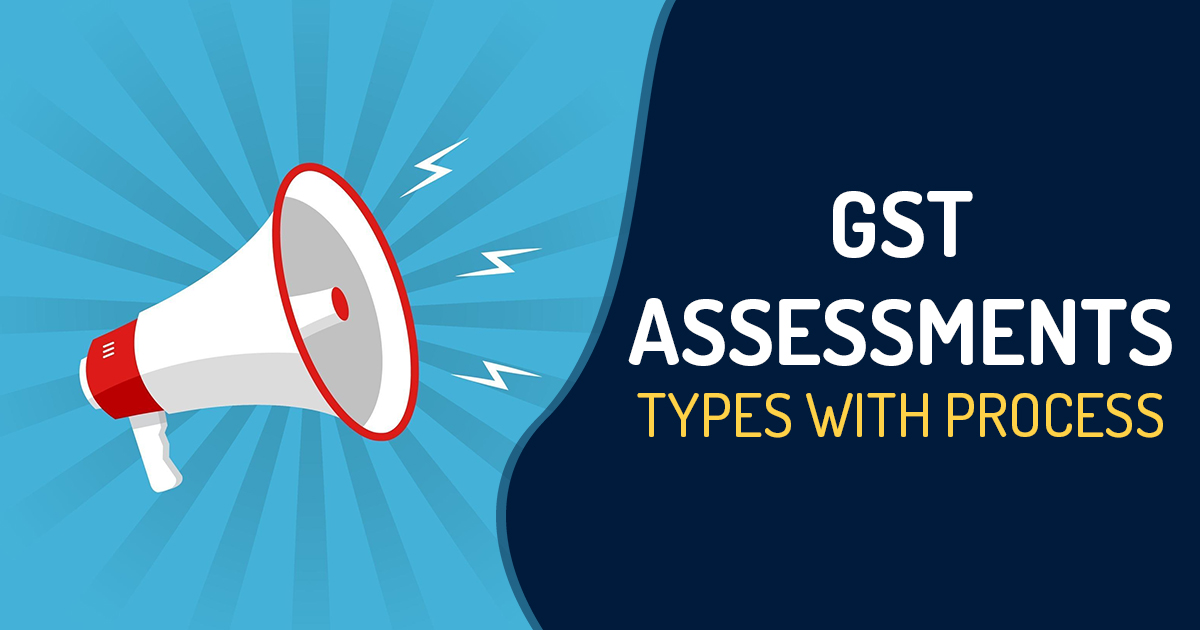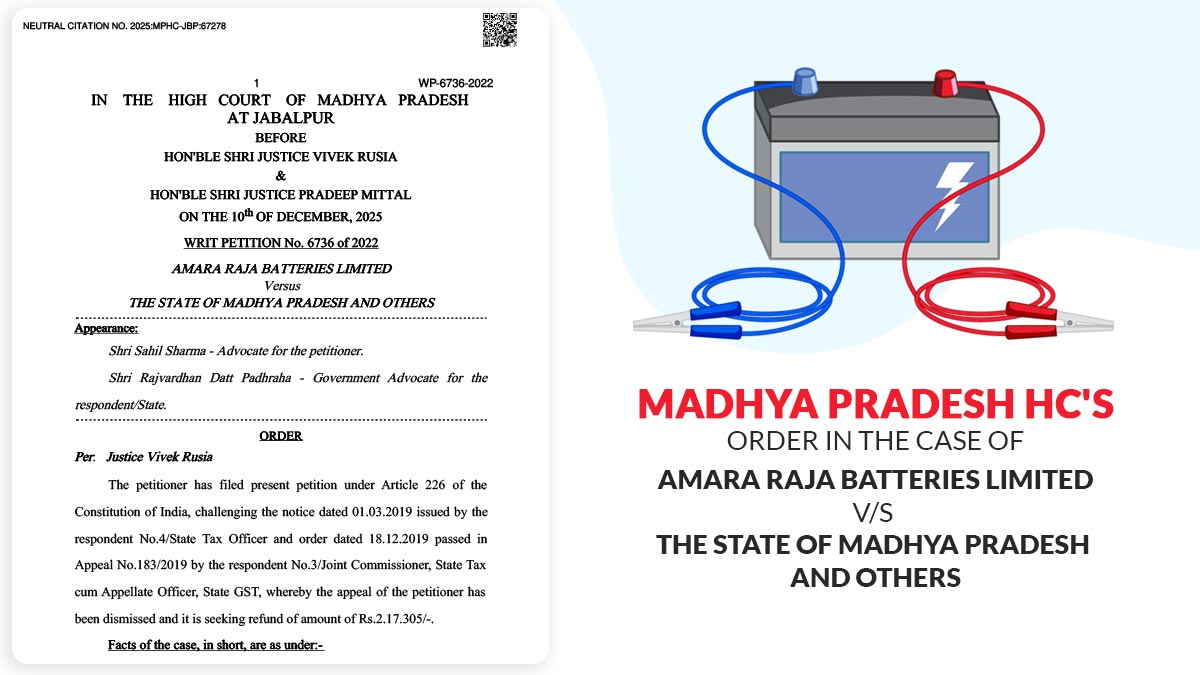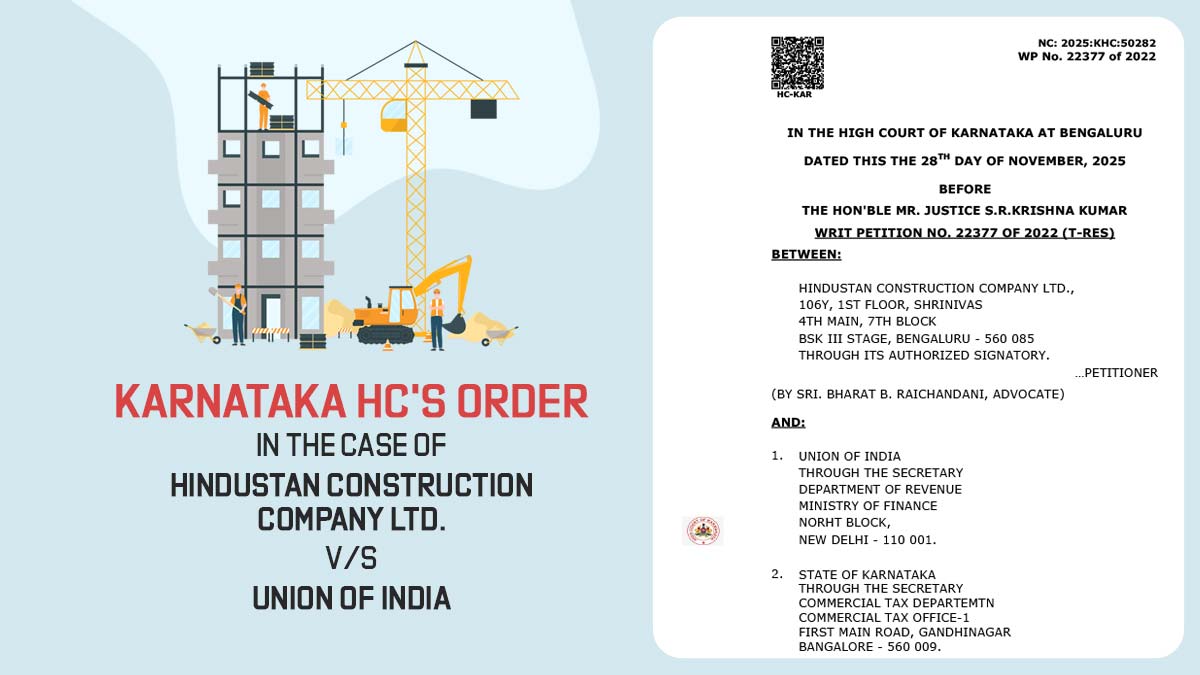
Under the Indian GST Act, assessment is a crucial step in the process. It deals with confirming and figuring out a taxpayer’s tax liability. The GST authorities perform assessments under the GST to make sure that taxpayers are adhering to the Act’s requirements and paying the right amount of tax.
Self-assessment is used in the GST assessment procedure, which implies that taxpayers must file their returns and make their own tax payments independently of the GST authority. The GST authorities may, however, carry out several sorts of examinations to guarantee compliance.
All Types of GST Assessments
The following passage provides an overview of the different kinds of GST assessments conducted by Indian tax authorities.
Self-Assessment Under GST Section 59
Taxpayers are responsible to determine their own tax due under this method of assessment and file their taxes correspondingly. The GST authorities will then examine the returns and, if necessary, start new assessments.
Under the GST system, taxpayers must independently evaluate their tax responsibilities. This involves submitting periodic returns that outline transaction specifics, forming the basis for determining the tax obligation through this self-assessment process.
Provisional Assessment Under GST Section 60
Section 60 of the Act outlines the procedure for provisional assessment when a taxable individual faces challenges in determining the value of supply or applicable tax rates. Within 90 days of receiving the necessary application and documents, the Proper Officer may issue an order specifying the provisional tax rate and value. According to section 60(2), a registered person is required to fulfil this process by providing a bond and security, such as a Bank Guarantee, not exceeding 25% of the bond’s covered amount.
The Proper Officer is mandated to determine the provisional tax liability within six months of the communication of the provisional assessment order. This assessment considers necessary information for concluding the assessment. If required, a Joint or Additional Commissioner may extend the deadline for the final assessment order by up to an additional six months, with a maximum extension of 4 years by the commission. Therefore, a provisional assessment can remain in a provisional state for a maximum duration of 5 years.
Under section 60(4) of the act, a registered person is obligated to pay interest on any portion of the tax amount due on a provisional basis that remains unpaid by the tax payment date. However, if the tax paid on a provisional basis exceeds the actual liability determined upon finalization of the assessment, the registered person is entitled to a refund.
Scrutiny of GST Returns U/S 61
When the GST authorities have cause to suspect that a taxpayer has not paid the right amount of tax or has not complied with the Act’s requirements, they will make this form of assessment. The taxpayer is expected to submit any further information or documentation that the authorities request.
Sections 62 and 63 Assessment Related to Judgment
This kind of charge is made when a taxpayer neglects to submit their returns or the necessary documentation. In certain situations, the GST authorities may, using their best judgment, evaluate the tax due and issue an assessment order.
Summary Assessment Under Section 64
When the GST authorities have proof of tax fraud or evasion, this form of assessment is made. The authorities may perform a brief evaluation in these situations and issue an assessment order.
In accordance with Section 64(1), if the Proper Officer possesses evidence indicating discrepancies in the tax liability, they can, with prior approval from the Joint Commissioner or Additional Commissioner, assess the tax liability in the interest of revenue. Moreover, if the taxable individual accountable for the tax liability cannot be identified, the responsible person in charge will be held liable to settle the assessed tax or any other dues.
GSTR Forms: Various GSTR forms are designated for distinct categories of taxpayers. For instance, GSTR-1 is designated for outward supplies, GSTR-2 for inward supplies, and GSTR-3 for the monthly summary return.
GST Return Filing: Consistent filing of GST returns is essential to adhere to regulations. Businesses must file returns according to their registration type (regular, composition, etc.) and turnover.
Reconciliation: Taxpayers must align the information in their GST returns with their financial statements, rectifying any disparities through suitable amendments.
Inspection of GST Returns
After the registered individual submits the return, the Proper Officer may examine the returns and associated details to verify their accuracy. Any inconsistencies between the returns and available information will be communicated to the registered person, who will be asked to explain. As per Section 60(3), if the registered person fails to offer a satisfactory explanation within 30 days of being notified about the discrepancies, appropriate action will be taken under Sections 65, 66, and 67 to determine any dues or penalties in accordance with Sections 73, and 74.
Tax Assessment of Non-Filers of GST Returns
Section 62 of the act emphasizes the significance of assessing individuals who haven’t filed their returns under the Goods and Services Tax (GST). This assessment is vital for maintaining compliance and identifying taxpayers who haven’t met their filing responsibilities. To tackle non-compliance, the government has instituted diverse measures while aiming to prompt regular filing among taxpayers. Let’s delve into the process of assessing non-filers returns in GST:
- Non-Filer Monitoring: The tax authorities maintain a continuous vigil on the GST portal to pinpoint registered taxpayers who fail to submit their returns by the specified deadlines. Through the GST system, reports and alerts are automatically generated for non-filers, aligned with the frequency of return filing, whether it’s on a monthly, quarterly, or annual basis.
- Notices to Non-Filers: Tax authorities issue notifications to non-filers, outlining their failure to submit returns within the set timeframe. These notifications typically contain details regarding the non-compliance, associated penalties, and guidance on resolving the issue.
- Initiation of Assessment: Should a taxpayer disregard the notification or fail to file the necessary returns within the specified duration after receiving the GST notice, tax authorities may instigate assessment proceedings. They can proceed with the assessment using existing information or request additional details from the taxpayer.
- Best Judgment Assessment: When filed returns are absent, tax authorities might resort to a best-judgment assessment. This involves estimating the tax liability based on available information, industry standards, and any pertinent data.
Throughout this assessment, the taxpayer may have an opportunity to present their case and provide supplementary information.
- Penalties and Interest: Failure to file returns can result in penalties and interest. The taxpayer might need to pay a late fee for every day the return is overdue, within a specified maximum limit. Additionally, interest could be imposed on the unpaid tax amount for the duration it remains outstanding.
- Cancellation of Registration: When a taxpayer repeatedly neglects to file returns, tax authorities have the authority to revoke the GST registration in severe instances of non-compliance.
Certain serious results might occur on the registration cancellation since the assessee shall no longer be qualified to collect or pay the GST and might suffer legal actions.
- Recovery Proceedings: Tax authorities have the right to start the process of reclaiming unpaid taxes, penalties, and accrued interest from taxpayers who haven’t complied. They can pursue recovery by actions such as seizing bank accounts, initiating garnishee proceedings, or potentially auctioning off the assets of those who are in default.
Unregistered Person Assessment
Under Section 63, individuals or entities obligated to register as per Sections 22 to 24, but have failed to do so or had their GST registration cancelled under circumstances outlined in Section 29(2), yet still held tax liabilities, are subject to assessment by tax authorities. This assessment pertains to determining tax liabilities of those not registered under GST, including small businesses, casual taxable individuals, or those involved in specific activities. The assessment process for unregistered entities involves evaluating their tax responsibilities within the GST framework.
Identity of a Person Who is Not Registered
Tax authorities employ diverse methods, such as data analysis, gathering intelligence, or utilizing specific information from various sources, to pinpoint unregistered individuals or entities.
Additionally, they may carry out surveys or inspections to identify businesses obligated to register under GST but currently operating without registration.
GST Notice to Unregistered Individuals
Upon identification of an unregistered individual or entity, tax authorities issue a notice outlining the obligation to register under GST and meet tax responsibilities.
This notice generally contains specifics regarding non-registration, relevant provisions, and guidance on achieving compliance.
GST Registrations of Unregistered Individuals
Following receipt of the notice, the unregistered individual or entity must apply for GST registration within the specified timeframe.
Upon successful registration, they are provided with a GSTIN (Goods and Services Tax Identification Number) and are obligated to adhere to GST regulations.
Assessment Related to Tax Liability
Following registration, tax authorities have the authority to begin evaluating the tax liability of individuals who were previously unregistered during a specific period.
This evaluation encompasses establishing the taxable turnover, computing the tax obligation, and implementing pertinent regulations for the duration when the individual was not registered.
Assessment Related to Best Judgement
If there’s insufficient information or records from the unregistered individual, tax authorities might employ a best judgment assessment. This entails estimating the tax obligation using accessible data and other pertinent information.
Throughout this assessment, the unregistered person could be given a chance to present their case and offer further information for consideration.
Tax, Penalty, and Interest Levy
During the unregistered period, tax authorities determine the tax liability and may enforce penalties and interest as deemed appropriate.
Penalties could be applied for reasons such as failure to register, delayed registration, or any infringement of GST laws.
Procedures for Recovery
Following the assessment, tax authorities commence recovery procedures to retrieve the overdue tax, penalties, and interest from the unregistered individual.
Recovery methods may include actions such as attaching bank accounts, initiating garnishee proceedings, or employing other enforcement measures.
Process for GST Assessments
The following is the process for GST assessments:
- A notification explaining the assessment will be sent to the taxpayer by the GST authorities.
- The taxpayer must deliver the needed data and paperwork within the allotted time frame.
- The GST authorities will review the data and records supplied by the taxpayer and, if necessary, launch additional investigations.
- Based on the inspection and investigation, the GST authorities will decide the tax due and issue an assessment order.
- The taxpayer may appeal the assessment order to the Appellate Authority if they are not happy with it.
In conclusion, GST assessments are a crucial step in ensuring adherence to the Act’s requirements and accurate tax payment. Taxpayers are responsible for preparing their GST returns and paying their own taxes, and the authorities have the right to make a variety of assessments to verify compliance. To avoid fines and interest, taxpayers must keep correct records and supply the required information and documentation during assessments.









